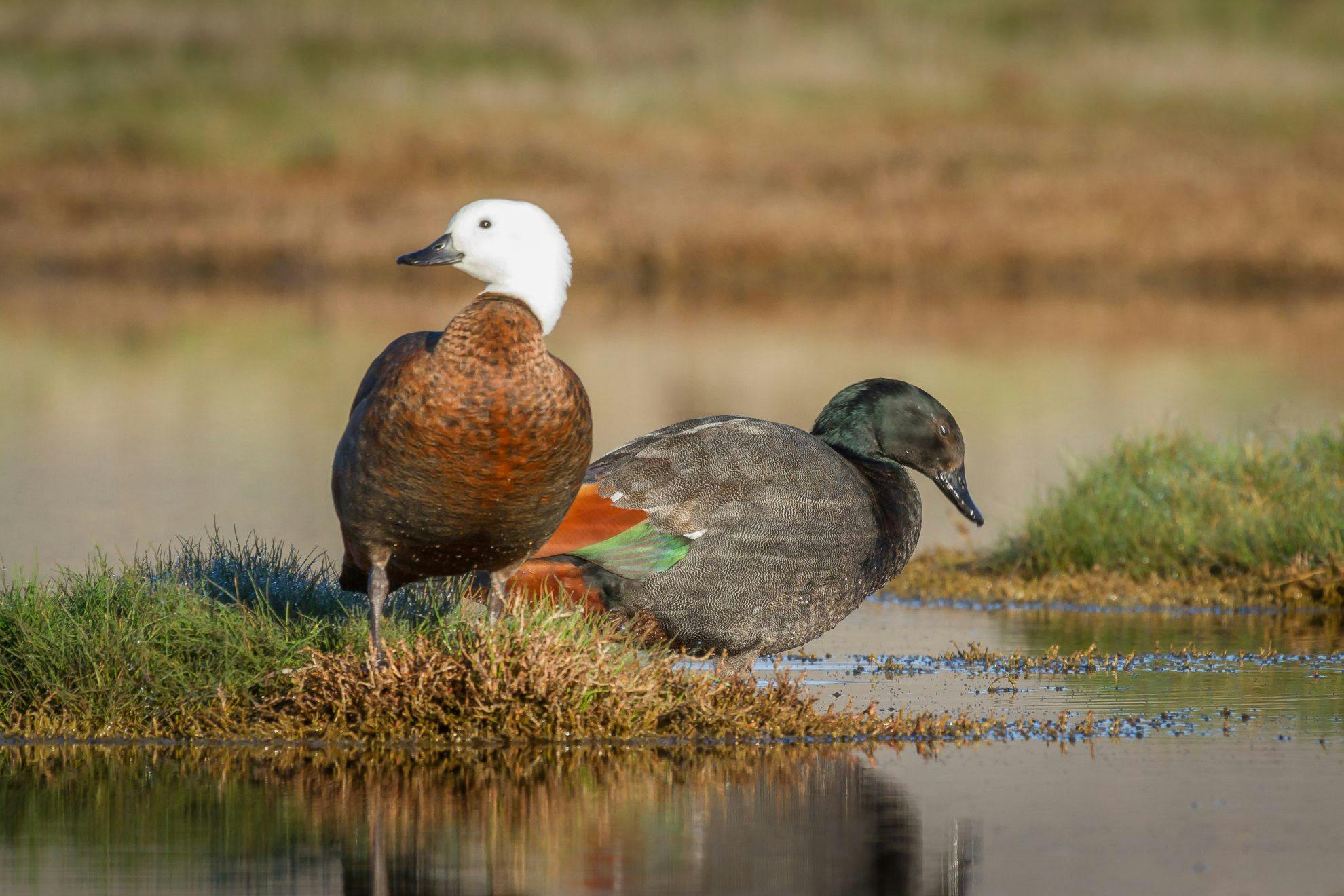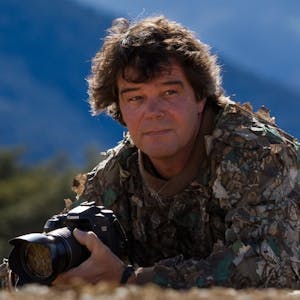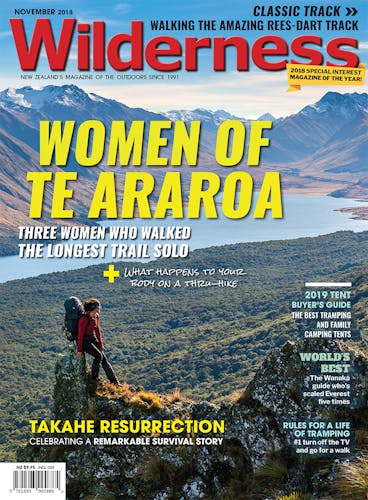The paradise shelduck is on the increase.
Since 1990, the paradise shelduck (putangitangi) population has increased dramatically and it can now be found around sports fields and other open grassed areas within urban environments.
Conservation status
Endemic species classified as ‘not threatened’.
Features
Paradise shelducks are between a large duck and small goose in size with males averaging around 1700g and the female 1400g.
The male is uniformly dark grey or black with an occasional green iridescence on the head, while the female has a chestnut-coloured body with a white head and upper neck. Both have dark grey/black legs and feet.
Call
The male gives a two-syllable goose-like honk when alarmed or in flight. The female has a much more rapid and persistent call that is higher in pitch and more piercing.
Bird spotting tip
Putangitangi will generally find you before you find them. The first you know of their presence is their harsh and very loud honking and squawking. Paddocks in rural areas with lush grass and clover are good places to keep your eye out for the bird. Often they will be in large mobs and are very conspicuous against the mono-toned green grass. Any body of water as well as tidal estuaries are also their favoured location.
Nesting
Shelducks pair during the breeding season and nest within a specific
territory that contains a body of water. The female chooses the nest site, which will be in a tree hole, rock crevice, under a building or debris pile – as long as it has overhead cover.
Up to 12 eggs are laid in August and September. The female does all the incubating over a 35 day period but after the chicks hatch, both parents care for them. A classic trait of the birds is to fake a broken wing to distract predators and people away from their young.
Diet
Putangitangi are generally herbivorous, with a preference for pasture grasses and clover. However, records have shown that they also eat a range of leaves and seeds of terrestrial herbs, some aquatic plants as well as invertebrates.
Feathery Fact
A pair of shelducks will occupy their territory year-round and from one year to the next. The pair’s bond is often lifelong but is sometimes challenged by unpaired individuals.








